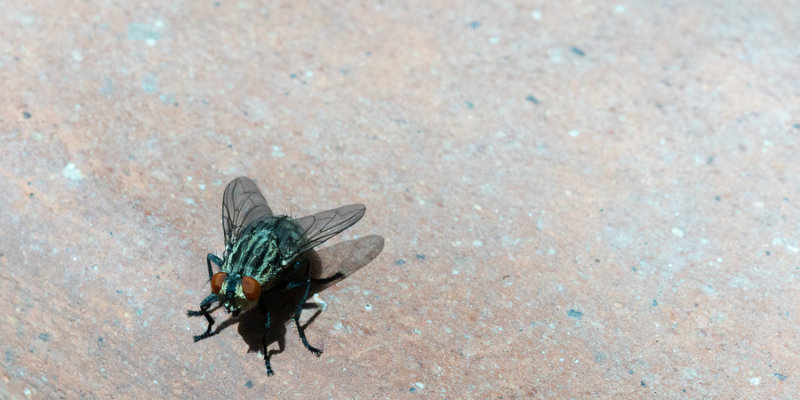The Blow Fly is also known as the family Calliphoridae. The adult is a robust tawny fly averaging 9-12mm long, although undersized specimens are frequently seen. The eyes of the female are separated by about 1-2mm, whereas on the male they adjoin one another. Adults can be seen at all times of the year, but are most common in spring, summer, and autumn.

- The eggs, which are laid in small clusters, are creamy white and about 1mm long. The young larvae (maggots) are grayish-white and segmented. There are three instars (larval stages), and the fully grown maggot may be 12-15mm long. The reddish-brown, barrel-shaped pupae can be found a few centimeters below the surface of the ground.
- Hosts: The larvae of these flies are normally found on carrion, but the female fly will sometimes lay her eggs or larvae on the fleece of live sheep. A sheep or ox carcass will support many thousands of larvae.
- Damage: The blowflies cause little damage, as they are normally scavengers that are the first in a chain of insects that clean up carcasses. However, when they attack a living animal (usually a sheep), severe damage or death of the animal may occur. The female fly is attracted to sheep when the wool is wet or damp. The odor of feces, urine, or bacterial straining will also attract flies. The adult fly is a nuisance in households or shops where fresh or uncooked meat is present, and unprotected meats are likely to be fly struck (have eggs laid on them). Adults are also attracted by the Odor of some vegetables, such as cooked cabbage. Females are usually looking for a protein meal pa prerequisite for egg production) or somewhere to lay their eggs or larvae.
- Distribution: The brown blowfly is a native of Australia, and has been known in New Zealand since the beginning of European colonization. It is found throughout the country, from sea level to above the bush line. It is closely related and very similar in appearance to another species of blowfly commonly found in forest areas.
- The adult female is viviparous (gives birth to larvae) in the warm summer months, but in cooler weather lays eggs. When eggs are laid, they hatch in a few hours, and the larvae reach full size and stop feeding after about 3-4 days. The fully grown larvae migrates away from the food source, and burrows underground a few centimeters to pupate. Pupation takes 2-3 days, and the pupae stage lasts a further 8-10 days. Flies are not sexually mature until several days after emergence, and after mating the female will then commence depositing up to about 200 live larvae or eggs on a suitable substrate, over a period of 2-3 weeks. Depending on ambient temperature, female flies may live for several weeks after egg laying is complete. The entire life cycle from egg to egg takes 3-5 weeks during summer, but considerably longer in the winter months. Pupae are known to over winter in the soil, and it seems likely that larvae could do the same, as this is known to occur in other species. When ready to emerge, the young adult forces its way out of the end of the pupae case, finds its way to the surface of the ground, and expands its wings, which soon harden off. Females fly off in search of a protein source. Little is known about the male but it probably lives as long as the female, and once it has fertilized one female, will probably seek others. Adult flies will shelter in trees and buildings during winter, occasionally flying on warm, sunny days, but rarely laying eggs. Four to five generations a year can be expected.
At Longhorn Termite & Pest Control, we offer blow fly control services for customers in Azle, Weatherford, Benbrook, and Graham, Texas.
